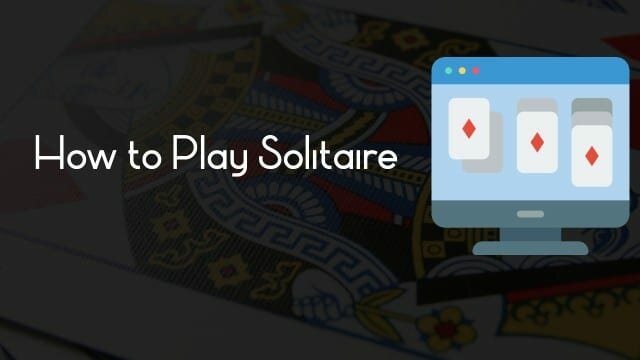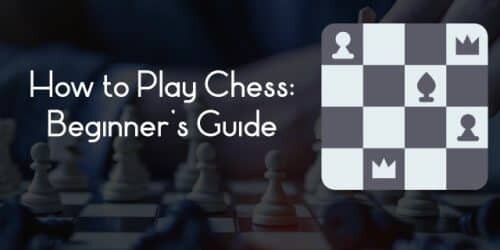How to Play Solitaire

Solitaire (United States/Canada), or Patience (other English-speaking countries), is a popular category of card games that shares the common goal of arranging the playing cards in a systematic order or, alternatively, pairing them off in order to discard them.
As the game surged online it has found its way to players around the world, seeing a rise in its global popularity. In this guide on how to play Solitaire, we will cover the basics of the card game and explain to our New Zealand followers where they can play the game.
Table of Contents
About Solitaire
Patience, or Solitaire is believed to be introduced in Germany or Scandinavia, with the first records of the card game going back to the late 1700s. The card game then became widely played in France which in the early 19th century had a central cultural role in the world after which it reached England and the United States in the second half of the century. Solitaire is not a single card game, but can come in different versions; most are meant for single play with a few exceptions that make it possible for 2+ players to play.
Patience is a card game for normally one person that is played with one standard deck of 52 cards without the jokers. When all 52 cards have been played in order to the end piles, the player has won the game. The objective of this, predominantly, single-player game is to clear all the playing cards, building a sequence which is categorised by suit from Ace to King.
Thanks to the introduction of the game in packages of US-based tech giants Windows as Microsoft, the American name Solitaire has gained widespread popularity. Most native English speakers — albeit this can depend on the generation or the platform of the game — will call the game Patience; this is also the case for most New Zealanders.
How To Play Solitaire Overview |
|
| Goal | The goal of Solitaire is to create a sequence among the seven piles. This needs to be done in descending order (that is K, Q, Jack, 10, 9, etc.), by alternating colours. |
| Origin | Germany, Scandinavia, late 1700s |
| Category | Card game |
| Other Names | Patience (Commonwealth countries, except Canada) |
| Available in New Zealand? | Yes |
Solitaire Basics
Solitaire has gone through an impressive and global renaissance as it was taken to an online format, making it available to the masses on first computers (or other online media) and later via the introduction of online casinos and other gambling sites. In a game of Solitaire, four types of piles are dealt: the tableau, the foundation, the stock, and the talon. These work with playing cards that are represented by 13 cards per symbol.
The order of the cards runs from Ace (low) to King (high) and vice versa from King High descending to Ace. The order or ranking of the cards runs from Ace (low) to King (high) and vice versa from King High descending to Ace. As in other card games, the Ace, King, Queen and Jack are also called suits in Solitaire which is basically because these are the only cards (besides the joker) that have an image. If you were to replace the pictures with values, the order would be as follows: Ace = 1, Jack = 11, Queen = 12 and King is 13.
1. Tableau
Beginning on the left side and moving to the right, the cards are dealt from a shuffled card deck forming seven piles that are part of the tableau. The tableau is considered the main playing area for the game of Solitaire. The first card is placed face-up on the tableau. This is done in order to make the first pile, after which one card is placed face down for the next six piles. Starting from the left to the right side once again, one card will need to be placed face up on the second pile. On the right side, one card can be placed face down on the four piles. This procedure needs to be repeated until the total of all seven piles has been dealt with.
2. The Stock
The undealt cards are put into what is known as the Stock. In this case, the pile of cards will need to be dealt with over the course of the game. Generally, this pile is placed above the first card of the tableau. This first card is the one you have dealt face up with no hidden cards found beneath it.
3. Talon
When you are dealing with the cards, there won’t be anything in the waste pile. This will change during the Talon. For this reason, it is recommended to create some room next to the stockpile. This is where the unused cards will be placed; the unused cards are the ones that are drawn from the stockpile but aren’t available for the tableau or the foundation piles. Make sure to place all the unused cards face up in the talon/waste pile.
4. Foundation
There is also space needed for the 4 foundation piles, as this is the place where the foundations are built for each suit as you go through the game. Ultimately, all cards must be stacked on this: this is done by starting with the Ace and selecting the cards by their symbol. This means that all diamond cards must be placed on the diamond pile by beginning with the Ace, and eventually ending with the King.
Play Solitaire
Most versions of Solitaire games don’t require a lot of space to be played. This makes this card game easy to play which is of course explained by the fact that this is a single-player game. Here is how to play Solitaire (Patience) with some of the basic game rules:
- The player may place a card under another card if the card has a different colour and if the card has the correct value to hang it in the correct order.
- When one of the 7 rows of the table is cleared and an open space is created, this may be filled with a King. The player can then place a queen of a different colour under the King.
- At the start of the game, the player can only move the face-up cards that are dealt face-up on top of the piles. Whenever a player can move this open card, a closed card will be placed on top. The player may then open this card and put it into play.
1. Consider The First Step
This means that the player will need to go to the tableau in order to make the very first move in the game. Cards can only be moved face-up in Solitaire (Patience) whilst aces can be put in the foundation piles. The playing cards can also be moved between columns, but with the condition that there are alternating colours with the cards needing to be placed in descending order. The idea of this step is to rearrange as many face-up cards as possible as this helps to reveal face-down cards in the columns. There are different moves available, giving the player the opportunity to get the desired result.
2. Start Off With Foundation Piles (Ace to King)
The foundation piles will need to be started with an ace, with every pile needing to be a single suit. This needs to be done in ascending order (that is: from Ace to King). If a player has the luck of coming across an exposed ace on the tableau right after starting the game, they can move it directly to the foundation pile.
3. Rearrange The Piles
The stacks of cards can be built up on the tableau. The idea of this is to keep on revealing new cards that can help the player get the combination they’re looking for. All the cards that are exposed on the table need to be dealt face up and stacked in descending order. In this case, this will need to be done with alternating colours of suits. The cards can be moved either separately or in columns. In the event of a face-up king of spades, the player can go ahead and take the column and place it onto the king.
When moving a face-up card or group of cards to another column, the player will need to verify if a face-down card has been exposed. When the move exposes face-down cards on the tableau, he or she can turn the single card over, turning it into a face-up on that tableau pile. This will lead to a new face-up card that can be used for play.
The idea behind the rearrangement of the piles is to enjoy moves that are considered what is called “productive”. This also means that it is not recommended to move cards when it’s unnecessary and to wait until the right moment. This will give the player the opportunity to get more playing cards on their foundation piles whilst it also gives them the chance to show hidden cards allowing progress and moving towards revealing the hidden cards.
4. Make Moves By Drawing from Stockpiles
If there aren’t any moves on the tableau the player can draw from the stockpile/waste pile. This basically means that the player either isn’t able to move anything to the foundation piles or hasn’t got any productive moves to make. In this event, there are two options the player can consider:
- The player can go ahead and take the card and lay it face up on the waste pile — one card can be taken at a time from the stockpile. The player can obviously also move and try to play this card by placing it anywhere on either the foundation piles or the tableau. If the player is not able to play the card, it is recommended to leave it face-up on the waste pile.
- Three cards can be drawn simultaneously from the stockpile. These cards can be drawn by individually placing each card face up on the waste pile. This means that the player can only play the third card at first. If they can’t play the card, then they will need to make sure to leave it face up on the waste pile. Playing the card gives the player the option to play the one that is revealed; which is basically the 2nd card that was drawn from the stockpile. The same process can be repeated, meaning the face-up card is revealed on the waste pile until the player has no more plays.
We do want to warn our followers that drawing three cards is a lot more challenging as they won’t be able to access every card in the stockpile, at least not straight away. For this exact same reason, we only recommend the second scenario to players who have more experience with the game of Solitaire, especially for the ones who want to play at real money online casinos.
If the player happens to have a waste pile, then it is recommended to always be sure to check it before drawing from the stockpile. The player can always play the face-up card on the top of the waste pile and move their way through the waste pile in order to get the result they were looking for. This can be done by playing any face-up card revealed on top. If there are no cards left to draw from the stockpile, then it is advised to move over to the waste pile and turn it into a stockpile. It is important not to shuffle the waste pile though.
5. Place A King
If the player has managed to remove all of the playing cards from a tableau column, they can move on to start a new column with a King by restarting the tableau. Removing all the cards from the tableau column means that they will have an empty space on the table. When a player makes a column in the tableau empty, they will get a new place to stack cards. This will give the player the opportunity to expose the other face-down cards right through the tableau and further work on the foundation piles.
Where To Play Solitaire in New Zealand?
With the above explanation of how to play Solitaire (Patience for New Zealanders), you should be able to play the game. In order to play it and get started, you’ll need a deck of cards. Alternatively, you can visit one of our recommended online casinos that offer this game as well. This is typically done in the category of “Specialty Games, “Table Games”, or “Other Games”. At a lot of our offshore partner casinos that operate from Europe, Solitaire is called Patience. Please look up that name if you want to play this popular card game and can’t find it under the name Solitaire.
KiwiGambler has the best options for New Zealanders for Solitaire as our casino partners are readily available in New Zealand, letting visitors deposit their funds, claim their bonuses, and withdraw their winnings in New Zealand dollars. Prepare yourself in the best possible way by getting the most out of the bonuses offered for this online card game.
References
- https://archive.org/details/gamesofpatiencef00joneiala
- https://en.wikisource.org/wiki/1911_Encyclopædia_Britannica/Patience






